Share This
One of my favorite parts of foreign travel is checking out the local whole grains scene, and my trip to Madrid last week for the FENS (Federation of European Nutrition Societies) conference gave me the chance to take the pulse of yet another country.
Whole grains are just beginning to appear on Spaniards’ radar. I feared the worst when we were served ham sandwiches on white rolls for lunch at the conference. People, this is a nutrition conference! Does it make sense for us to sit all morning in sessions extolling the importance of fruits, vegetables, and whole grains, and then eat a white bun with cured meat? (I’m spoiled by Oldways conferences, where healthy delicious food is carefully crafted to illustrate the conference topics.)
When I got out into the streets and away from the conference, however, I found enough whole grain choices to cheer me up. Here’s the story in photos.
Rice is a big staple in Spanish cuisine – think paella! – so we were pleased to see arroz integral, or brown rice, taking equal billing with arroz blanco in the grocery store. It’s labeled calentar y servir – heat and serve – and we like that both options are the same price. We found bags of brown rice too, which is a good thing, because 1.90€ for two servings of brown rice is kinda pricy. Guess you pay extra for the heat-and-serve convenience.
On, to the pasta aisle. Here it was encouraging to see Barilla’s whole grain pasta – in the red box with integrale on it – sharing shelf space with the blue refined pasta choices. The whole grain revolution is all about choice and offering options for everyone.
Bread is a minor product at most groceries (do Spaniards still buy it mostly from bakeries?). The rack above, labeled integral, constituted about a third of the bread in this small grocery. WGC member Grupo Bimbo offers options too, at most stores, like the pan de molde integral above right and the pan de horno tierno – oven fresh bread – below right. (One interesting note about the bread. See the words sin corteza on the red package? That means “without crust.” If you always insisted Mom cut the crusts off your bread when you were a kid, you’d like Spain, where most sandwich bread is sold sin corteza.)
Home baking isn’t big in Mediterranean countries, where there’s usually a bakery on every corner. So we weren’t surprised to see the the ready-made magdelenas integrales – whole grain muffins – on the right. The existence of baking flour was unexpected, and the fact that harina integral de trigo – whole wheat flour – was on offer was an especially nice serendipity.
“Digestive biscuits” have always been popular in Spain. We’re told digestive biscuits originated in the UK and were originally made with some of the bran that was a by-product of milling wheat into refined flour. In recent decades, however, these semi-sweet cookies that are often referred to as “Marias” in Spain, have typically been made entirely of refined flour. So it was very satisfying to see that whole grains have appropriately invaded this category of product more than perhaps any other.
It’s only recently, my Spanish friends tell me, that whole grain products have been available outside of the Special Diets section of groceries. Many of the whole grains we saw were also labeled sugar free, and were segregated apart from “normal” products. Yet efforts to educate consumers about the benefits of whole grains are beginning to be visible in the grocery aisles. The packaging from WGC member Weetabix, above, features an ingredient list boasting that 95% of the product is trigo entero, or whole wheat, and that Weetabix Original “offers you a healthy cereal full of whole wheat…”
Cereal Partners Worldwide, the joint Nestlé-General Mills venture under which familiar cereals like Cheerios are sold outside the United States, goes perhaps the farthest in working to educate consumers. The entire back panel of this CPW cereal box explains “What are Whole Grains?” complete with a diagram of the three parts of a grain. The graphic at the start of this blog was from the same package of Fitness cereal; it says, “Did you know that… studies demonstrate that women who eat whole grains tend to maintain a weight more suited to good health. Fitness contains whole grains, and for this reason helps you look after your figure… and keep it!”
But what about restaurants? Whole grains are still on the very outer fringe of awareness in foodservice. At Alkalde restaurant the waiter came to our table with a big tray of several dozen dinner rolls, all white. Ever the optimist, I looked him in the eye and asked, “Integral?” and lo and behold, he brought up a whole grain roll tucked out of sight under the edge of the napkin lining his tray. We had better luck at Santo, a small place specializing in healthy food. The sign in the window said Jumbo Prawns with Pesto and Quinoa and Market Vegetables, so we had to go in. We rewarded the waiter with a Just Ask for Whole Grains button when he served this tasty dish.
Last chance. We were at the airport, heading home, when we spotted these sandwiches labeled bilingually with pan integral / whole wheat bread. Ham, bacon, and egg was a bit more than I wanted at the moment, but I appreciated the thought. Wonder how the whole grain scene will have developed by the next time I visit Spain? (Cindy)

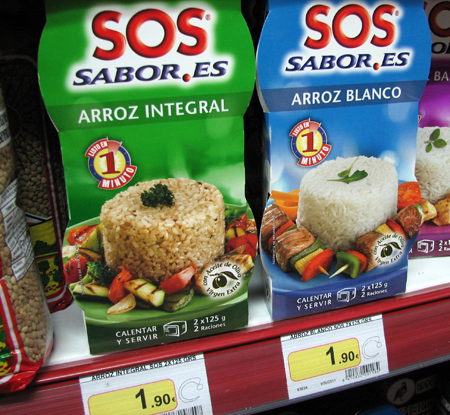
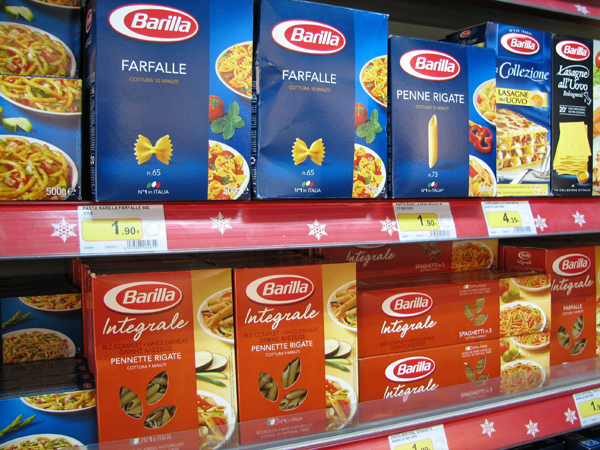
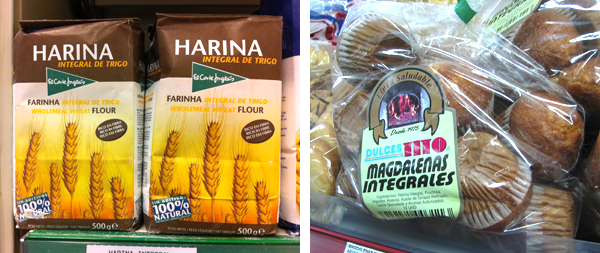
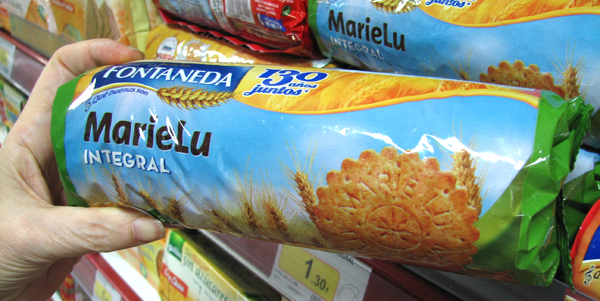
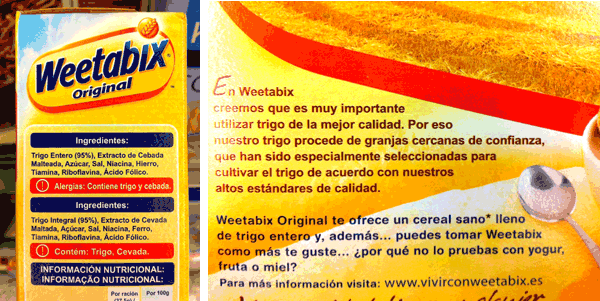
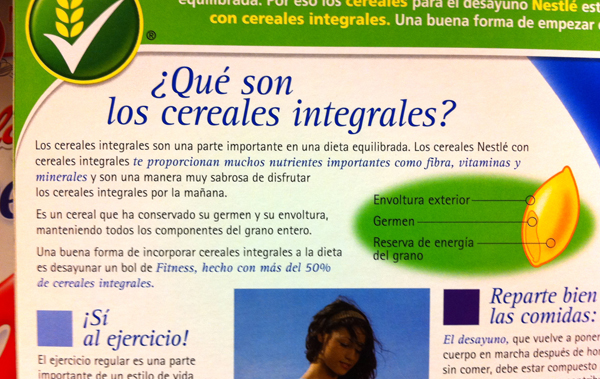
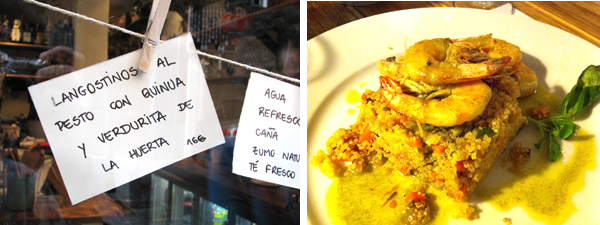
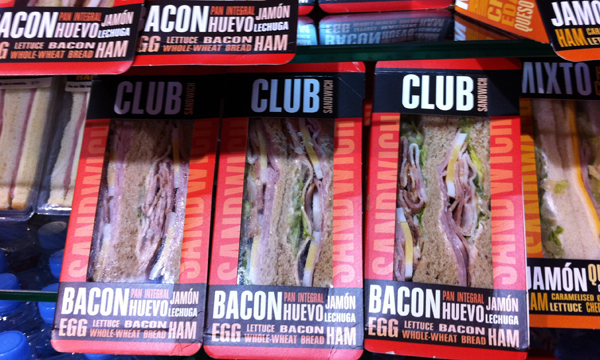
Comments
Add a Comment